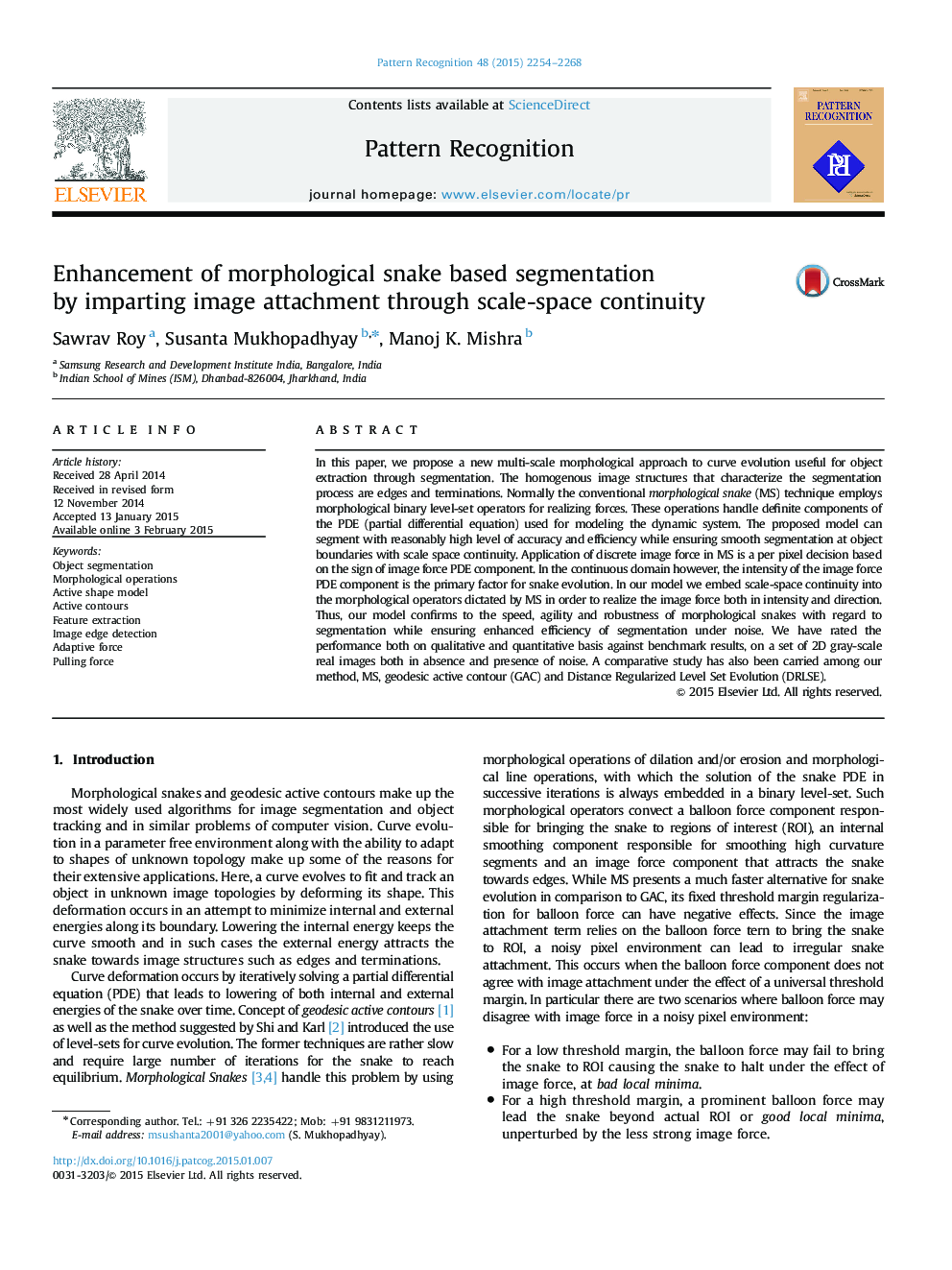| Article ID | Journal | Published Year | Pages | File Type |
|---|---|---|---|---|
| 530102 | Pattern Recognition | 2015 | 15 Pages |
•Multi-scale morphological approach to curve evolution is suggested for segmentation.•We embed scale-space continuity in morphological snakes.•Morphological operators ensure fast curve evolution.•Scale-space continuity ensures smoother segmentation near edges.•Extraction improvement near noisy pixels is observed with scale-space continuity.
In this paper, we propose a new multi-scale morphological approach to curve evolution useful for object extraction through segmentation. The homogenous image structures that characterize the segmentation process are edges and terminations. Normally the conventional morphological snake (MS) technique employs morphological binary level-set operators for realizing forces. These operations handle definite components of the PDE (partial differential equation) used for modeling the dynamic system. The proposed model can segment with reasonably high level of accuracy and efficiency while ensuring smooth segmentation at object boundaries with scale space continuity. Application of discrete image force in MS is a per pixel decision based on the sign of image force PDE component. In the continuous domain however, the intensity of the image force PDE component is the primary factor for snake evolution. In our model we embed scale-space continuity into the morphological operators dictated by MS in order to realize the image force both in intensity and direction. Thus, our model confirms to the speed, agility and robustness of morphological snakes with regard to segmentation while ensuring enhanced efficiency of segmentation under noise. We have rated the performance both on qualitative and quantitative basis against benchmark results, on a set of 2D gray-scale real images both in absence and presence of noise. A comparative study has also been carried among our method, MS, geodesic active contour (GAC) and Distance Regularized Level Set Evolution (DRLSE).
